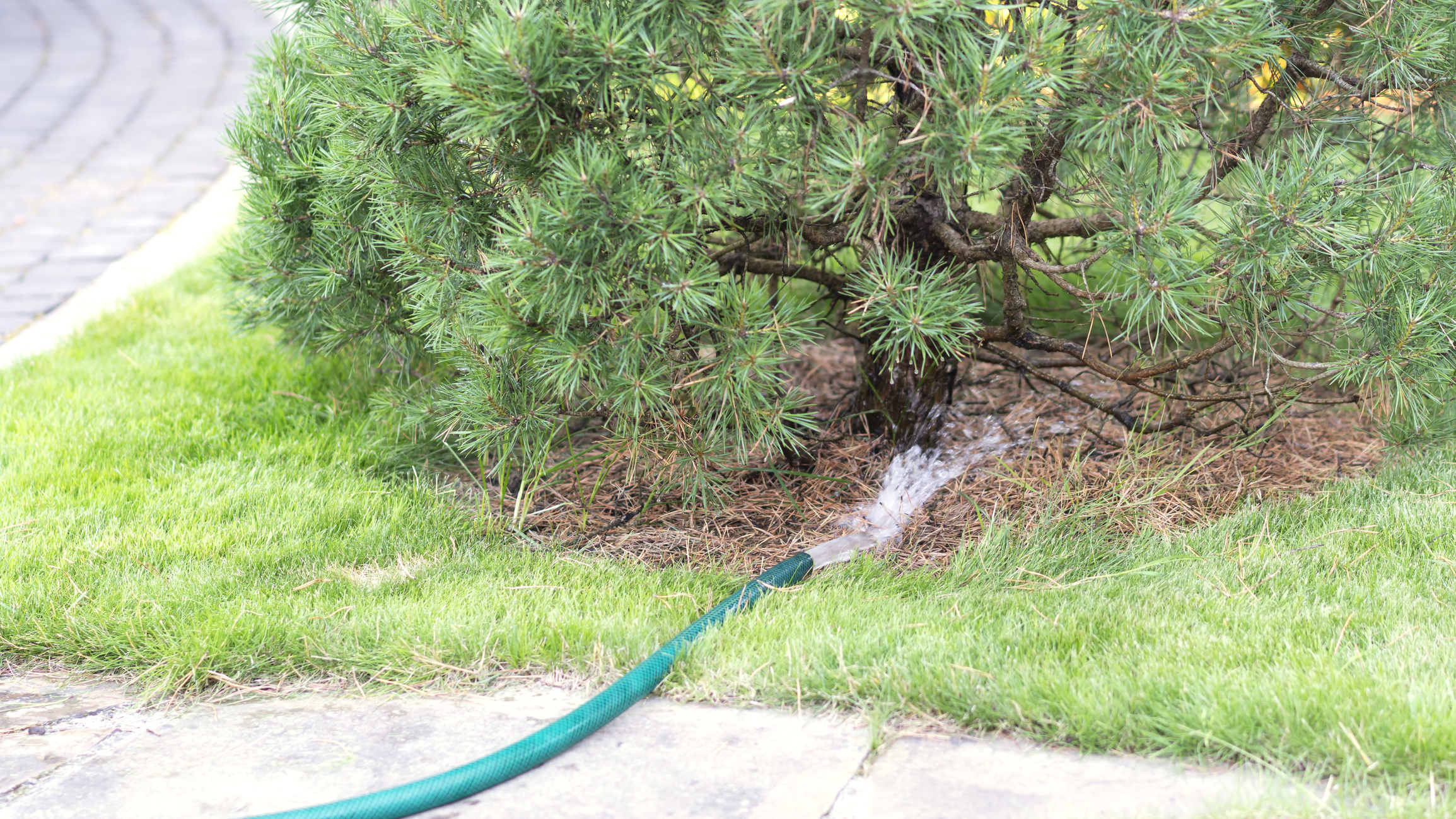Drought-induced stress can have a severe impact on the health of trees and shrubs, leading to wilting leaves, stunted growth, increased vulnerability to pests and diseases, and even potential death if water loss is not replenished. To mitigate moisture stress and safeguard your plants during drought conditions, it is important to follow these recommendations:
Optimal Irrigation Practices in Dry Weather
The roots responsible for water absorption in trees and shrubs are typically located in the top six inches of soil. However, some species develop deeper roots to adapt to drought conditions. Accordingly, irrigation requirements vary depending on the species and prevailing weather conditions.
During the growing season, water shrubs and shallow-rooted species once a week. Ensure that the hose or irrigation system is run for a sufficient duration to moisten the soil to a depth of at least six inches. For drought-tolerant species, watering every two to four weeks may be sufficient. Avoid daily or frequent watering, as this can be detrimental to tree and shrub roots. Overwatering is as harmful as providing insufficient water, so it is crucial to irrigate landscape plants appropriately.
Mulching for Soil Moisture Conservation
Applying a layer of organic mulch, about two to four inches thick, on the soil surface helps retain soil moisture. This cost-effective method is highly effective in reducing drought-related damage. Over time, organic mulch enriches the soil by adding organic matter, thereby promoting root development and enhancing its moisture-holding capacity. Mulched areas also eliminate competition for water and nutrients from turf or other ground covers. Use any type of organic mulch, such as wood chips, shredded bark, bark nuggets, pine straw, or leaves. Apply mulch throughout the year, following recommended guidelines for mulch application.
Assess Soil Nutrient Requirements
Prior to fertilization, conducting a soil test can determine the presence of any nutrient deficiencies or excesses. Adequate potassium levels are particularly crucial for plants to overcome drought damage. Some forms of potassium fertilizers can also enhance plants’ defenses against common diseases. Soil samples can be collected and slow-release fertilizers applied at any time when the soil is not frozen or too hardened due to drought conditions.
Manage Insect Pests and Diseases
Plant diseases and insect pests weaken trees by causing damage to leaves, branches, stems, or roots. This impairment hinders the plants’ ability to absorb and transport water and nutrients, exacerbating the effects of drought. It is essential to identify and address pest and disease issues early on, before they escalate into severe problems. Consulting a Certified Arborist can help in identifying pests and diseases and applying appropriate treatments at the right time.
Consider Drought-Tolerant Species for Your Landscape
Drought occurrences have become increasingly common over time, affecting numerous tree and shrub species. When selecting or replacing plants in your landscape, it is advisable to choose species that are well-suited to drought conditions prevalent in your geographic region. By taking proactive measures to mitigate the impact of drought, you can minimize damage to your landscape and promote its long-term health.
Contact Excel Tree Care for Tree Services in Atlanta
By following these guidelines, you can effectively protect your trees and shrubs during drought, ensuring their vitality and resilience in challenging weather conditions. If you have trees on your property in need of maintenance, or trees that require removal, contact Excel Tree Care for a free estimate. Our team is available 24/7 for emergency service and is fully licensed and insured. We proudly serve all North Metro Atlanta areas. Get in touch with us by calling (404) 964-6508 or submit your request with our online contact form.

